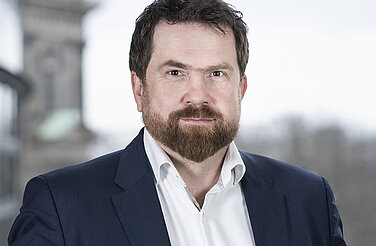-
In 2019 greenhouse gas emissions in Germany fell by over 50 million tonnes of CO₂ thanks to a sharp drop in lignite and hard coal generation which are now around 35% lower than in 1990.
Meanwhile, CO2 emissions from the buildings and transport sectors have risen due to an increase in oil and gas consumption. The decline in CO2 emissions can be attributed to the higher CO2 prices in the EU ETS, a significant increase in renewable generation and lower electricity consumption. The rising share of SUVs in the transport sector is responsible for rising emissions.
-
Renewable energy broke a new record, reaching almost 43 percent of electricity consumption. Unfortunately, the collapse in wind capacity expansions to just one gigawatt per year means the energy transition is entering the 2020s with a heavy burden.
Whilst annual growth in renewables has been consistently in the 15 terawatt hours in recent years, the lack of available space and permits for wind capacity puts its continuation in jeopardy. Decisive political action is now required if the 2030 renewable energy targets are to be achieved.
-
When it comes to the costs of renewable energy, the peak is in sight: the EEG levy will rise again in 2020 to 6.77 cents per kilowatt hour, but is expected to fall in 2022 at the latest, thanks to the lower costs of renewable energy.
Older, more expensive power plants will then increasingly fall out of the support scheme. In addition, from 2021, part of the revenue from the Fuel Emission Trading Act (BEHG) will be used to reduce the EEG levy. As a result, the price of electricity is likely to fall slightly in the 2020s rather than rise.
-
Surveys have shown that climate protection and the energy transition are the number one concern amongst German society in 2019, far ahead of immigration and pensions. This fact is not reflected in the country’s climate politics.
Indeed, the climate package adopted by the German government in September is not sufficient to achieve the 2030 climate protection targets. There is a considerable need for improvement, particularly in the areas of transport, buildings and industry.
The German power market: state of affairs in 2019
Summary in English
Preface
In 2019 surveys have shown that climate protection and the energy transition is the number one concern. Climate change becomes more visible every year. Right at this moment, wildfires have wrought destruction across land the size of Ireland and Switzer-land combined. The FridaysForFuture movement has succeeded in raising public awareness for the scien-tific findings and putting pressure on politics to act. The political response however, has been tepid.
At the same time, the energy transition has moved forward in many fields: Electricity generation from coal has declined substantially leading to a fall of 50 million tonnes in CO2 emissions, a record low. This decline was only exceeded in 2009 during the great financial crisis. Meanwhile, generation from renewables has increased considerably. As a result, wind and solar provided more electricity than lignite and hard coal combined. Unfortunately, such advanced cannot be said of the other sectors. Indeed, emissions in the transport sector even increased in 2019 compared to 2018 levels. Furthermore, the lack of newly installed onshore wind power plants will lead to a decline in their growth rate in the coming years meaning the increase in renewable energy generation will slow down in the future.
This document contains the key findings, the press release, the ten most important take-aways as well as the graphics of the report.
Key findings
Bibliographical data
Downloads
-
Main Report
pdf 966 KB
The German power market: state of affairs in 2019
State of Affairs in 2019
-
Translation
pdf 1 MB
La transition du secteur électrique allemand – Bilan annuel 2019
French translation





